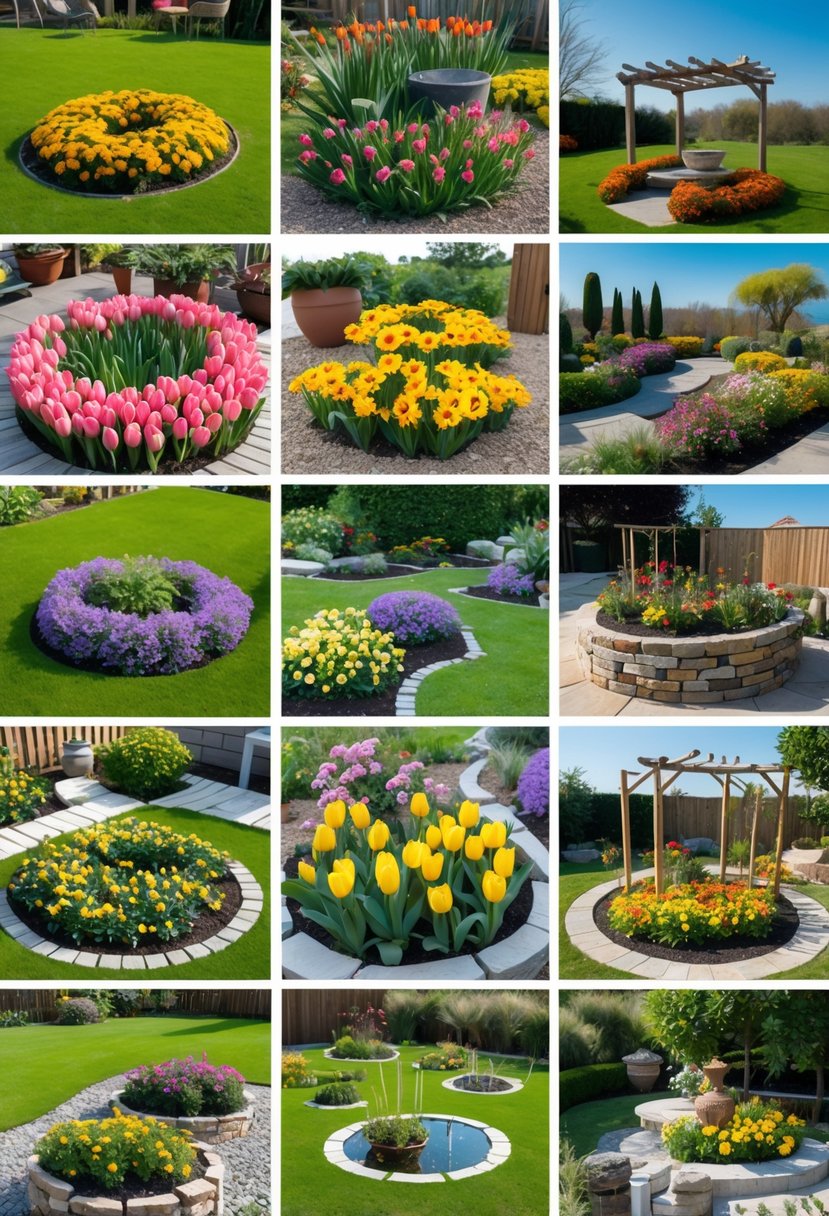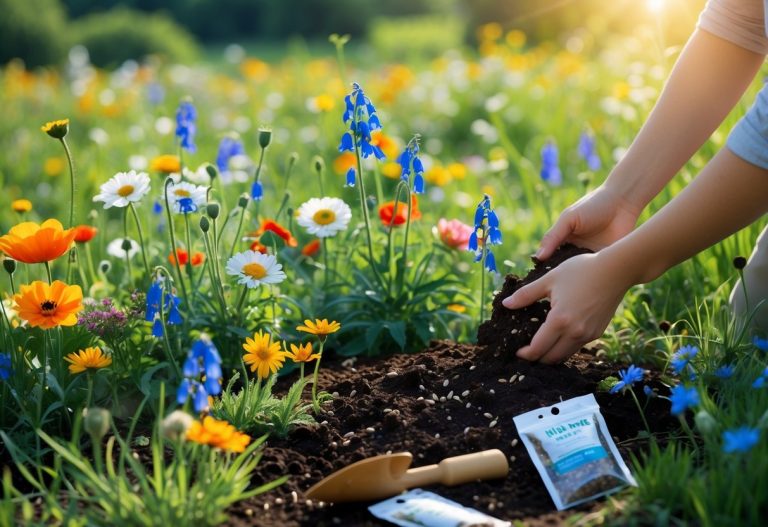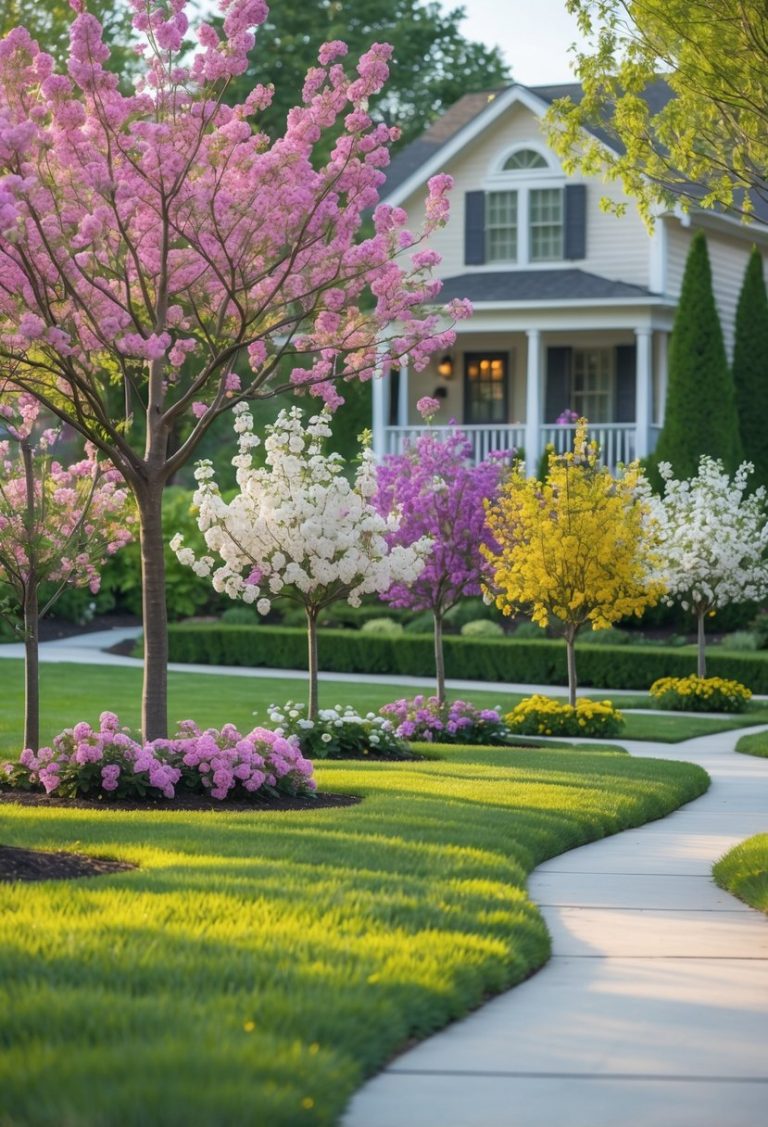15 Flower Garden Ideas to Transform Your Outdoor Space Effortlessly
Creating a beautiful flower garden can be simple and rewarding with the right ideas. Whether the space is large or small, sunny or shaded, thoughtful planning helps bring color and life to any yard. 15 flower garden ideas can guide gardeners in choosing plants, designs, and layouts that fit their space and style.

These ideas include ways to mix colors, textures, and plant types to make gardens both attractive and low-maintenance. They also offer tips for different locations, like sunny spots or shady corners, so anyone can find a solution that works best for their garden conditions.
From classic flower beds to creative containers and seasonal blooms, gardeners have many options to explore. Each idea aims to inspire practical and beautiful results that make the most of any outdoor space.
Key Takeways
- A well-planned flower garden starts with understanding location and light.
- Combining different plants can add visual interest and ease care.
- Seasonal options keep a garden colorful year-round.
Fundamentals of Flower Garden Design

Designing a flower garden starts with clear planning, selecting plants that suit the space, and understanding the soil and light conditions. These details shape how well the garden will grow and look throughout the seasons.
Planning Your Flower Garden
Planning involves deciding the garden’s size, style, and purpose. It helps to sketch the layout, showing where each type of flower will go.
Consider the garden’s location. Is it a small balcony or a large yard? Use raised beds or container gardens for limited space. Grouping plants by height and color can create visual interest.
Setting a theme, like a butterfly or fragrance garden, guides plant choice. Planning also includes scheduling bloom times to have flowers all season, making the garden lively and colorful.
Choosing the Right Plants
Choosing plants depends on climate, soil, and garden style. Pick flowers that thrive in the local weather to reduce maintenance.
Use a mix of perennials and annuals for consistent blooms. Perennials return each year, while annuals can fill gaps and add extra color.
Select plants with varying bloom times and heights to add layers and texture. Including edible or native flowers can increase garden value while supporting local wildlife.
Soil and Sun Requirements
Healthy soil is vital for strong plants. Testing soil pH and nutrients helps choose proper amendments like compost or mulch.
Most flowers need well-drained soil rich in organic matter. Heavy clay or sandy soil may require adjustment before planting.
Sunlight is another key factor. Some flowers need full sun (6+ hours), while others grow well in partial or full shade. Matching plants to the sun exposure of each garden area ensures better growth and fewer problems.
For detailed flower garden ideas and layouts, refer to 15 flower garden ideas and other practical designs.
Creative Flower Garden Ideas

Creative flower garden ideas often focus on style, layout, and theme to make each space unique. Combining different plants, colors, and designs can turn any yard into a distinctive and inviting area. Attention to detail and the overall mood help guide the best choices for planting and arranging flowers.
Cottage Style Gardens
Cottage style gardens mix a variety of flowers in informal, natural arrangements. They often include colors like soft pinks, whites, and purples. Plants grow close together with little space between, creating a cozy and lush feeling.
Common flowers in this style include daisies, foxgloves, hollyhocks, and lavender. Paths made of stone or brick add charm and accessibility. Garden accessories such as old-fashioned benches, birdhouses, or wooden trellises enhance the classic look.
This style suits gardeners who like a relaxed, romantic vibe with a mix of textures and blooms. It works well in small to medium spaces and encourages a bit of controlled wildness.
Modern Minimalist Designs
Modern minimalist flower gardens focus on simplicity and clean lines. This style uses fewer plant types but often features bold colors or striking shapes. Plants are spaced for impact, with strong contrasts between flowers and garden materials like concrete or metal.
Common plants include succulents, ornamental grasses, and a few striking flowers such as tulips or orchids. The layout often emphasizes symmetry or geometric patterns.
Minimalist gardens benefit people who want low maintenance but eye-catching results. This design works well in urban homes or places with limited space but high style demands.
Themed Flower Gardens
Themed flower gardens tailor plant choices and arrangements around a central idea or mood. Themes can be based on colors, seasons, or special interests like butterfly gardens or tropical paradises.
For example, a butterfly garden uses nectar-rich plants like milkweed, butterfly bush, and coneflowers to attract pollinators. A seasonal theme might focus on flowers that bloom in different months for year-round color.
Choosing a theme helps create cohesion and a clear purpose in the garden design. It can also guide plant selection and maintenance plans, making it easier to achieve a unique and personal garden space.
For more unique flower garden ideas, exploring DIY projects and container gardens can add personality and convenience to any setup. These creative approaches help make flower gardening accessible and enjoyable for everyone.
Learn more about these ideas for flower garden styles at 28 creative DIY flower garden ideas.
Flower Garden Ideas for Different Locations

Flower gardens can be designed to fit specific areas, making the most of sunlight, space, and purpose. Choosing the right plants and layouts for each location ensures visual appeal and easier care.
Front of House Displays
The front yard is the first impression of a home. It’s important to create a welcoming and neat flower garden that complements the house style. Using symmetrical flower beds with bright, low-growing flowers along walkways can guide visitors to the door.
Evergreens mixed with seasonal blooms add year-round interest. Consider hardy plants like boxwoods or lavender for structure, paired with colorful flowers such as tulips or petunias. Make sure the garden matches the available sunlight to keep plants healthy.
Borders, mulch, and edging give the garden a tidy look. Mixing different heights and colors helps avoid flat or boring spaces. Flower garden ideas for front of house spots can also include container gardens by the steps or hanging baskets for added color.
Backyard Retreats
Backyards provide more space for varied designs. A mix of flower beds, shrubs, and walkways can create a private, relaxing garden. Shade-loving flowers can be planted under trees, while sunnier spots are best for sun-loving perennials.
Adding seating areas surrounded by climbing roses or hydrangeas turns the garden into a comfortable retreat. Planting flowers in layers, with taller plants in the back and shorter ones in front, helps the garden feel full without being cluttered.
Consider flowers that attract butterflies or bees to bring life to the backyard. Proper irrigation and easy access to water will help keep plants thriving throughout the seasons.
Small Space Flower Beds
Small spaces need smart design to avoid overcrowding. Using vertical gardening, such as hanging pots or trellises, allows growing more flowers without taking up ground space.
Choose compact or dwarf flower varieties that fit well in limited areas. Containers or raised beds work well, especially on patios or balconies. Group flowers with similar water and sunlight needs for simple care.
Color coordination and repeating plant types create a sense of unity in tiny spaces. This approach makes even a small flower bed look organized and bright. Unique containers, such as vintage crates or wheelbarrows, add personality and save space. For more ideas, see creative options for container gardens.
Tips for Sun and Shade Gardens

Flower gardens need different care and choices depending on how much sunlight they get. Some plants thrive in bright, full sun, while others do better in partial or full shade. Understanding these differences helps create a healthy, vibrant garden all year.
Full Sun Flower Garden Ideas
Gardens that get six or more hours of direct sunlight daily can support a wide variety of bright, colorful flowers. Plants like sunflowers, zinnias, marigolds, and lavender do well in these conditions. These flowers love heat and use the full sunlight to bloom profusely.
In a full sun garden, soil quality and watering are important. Well-draining soil helps prevent root rot, and consistent watering during dry spells keeps plants strong. Mulching can reduce evaporation and keep roots cool.
To add interest, mix plants with different heights and bloom times. For example:
- Tall: Delphiniums or hollyhocks
- Medium: Coneflowers or black-eyed Susans
- Low: Creeping phlox or alyssum
This layering creates depth and constant color throughout the growing season.
More ideas for flower garden ideas for full sun can be found at Martha Stewart’s page on shade garden ideas to brighten your yard.
Partial Shade Solutions
Partial shade means plants get about three to six hours of direct sunlight, usually in the morning or late afternoon. Many popular flowers grow well here, such as astilbe, bleeding hearts, and foxgloves.
This balance of light helps plants that need cooler conditions during the hottest part of the day. Gardeners should focus on soil that holds moisture but still drains well, as partial shade areas can dry unevenly.
Using reflective surfaces like light-colored mulch or garden stones can improve light availability. Adding plants with variegated leaves or bright blooms can lift darker corners.
Partial shade gardens also benefit from layered planting with shrubs or small trees to filter light. Japanese maples or dogwoods provide good top layers and add seasonal color. See more ideas about managing light in shade gardens at Real Homes.
Shade-Tolerant Plant Choices
Areas with less than three hours of direct sunlight need plants specifically suited for shade. Many leafy, textured plants can create interest without heavy blooms.
Good choices include hostas, ferns, hellebores, and bleeding hearts. They focus more on foliage, with flowers that bloom subtly early or late in the season. Combining plants with different leaf shapes and colors adds visual variety.
Shade gardens also benefit from hardscaping elements like stepping stones or benches, which create usable outdoor spaces without disturbing plants. Small trees like flowering dogwoods or Japanese maples add height and seasonal color, helping to break the monotony.
Gardeners should avoid overcrowding and maintain good airflow to prevent fungal diseases common in shade. For details on designing successful shade gardens, see LawnStarter’s shade garden ideas.
Seasonal Flower Garden Inspiration

Planning a garden with flowers that bloom through different seasons keeps color and life in the yard for much of the year. Choosing the right flowers for each season involves picking varieties that thrive during specific weather conditions and bloom at different times. This approach also helps create layers of interest and texture in flower garden ideas and layouts.
Spring Bloom Strategies
Spring gardens benefit from early-blooming bulbs and perennials that wake up after winter. Flowers like tulips, daffodils, and hyacinths provide bright, vivid colors that attract early pollinators. Planting these in groups adds impact and makes the bloom season more noticeable.
Using a wave pattern in planting, where shorter plants like crocuses are near the front and taller tulips at the back, improves visibility and design flow. Adding container gardens with spring flowers can extend color to patios or balconies. Early blooms prepare the garden for the next wave of summer flowers.
Summer Flower Combinations
Summer calls for hardy, heat-tolerant flowers that can handle long, sunny days. Roses, sunflowers, and petunias are popular choices for added color and variety. Combining these with native plants reduces water needs and improves garden sustainability.
Mixing tall and short plants helps create depth in layouts. For example, placing sunflowers behind petunias adds height variety. Grouping flowers in clusters of three or five keeps designs balanced and draws attention naturally. Including fragrant options like lavender also enhances the garden’s sensory appeal.
Extending Color into Autumn
To keep gardens colorful in the fall, adding flowers that bloom late in the year is key. Chrysanthemums, asters, and goldenrod provide warmth and richness in autumn shades. These flowers tolerate cooler temperatures and shorter days.
Planting autumn bloomers near summer flowers allows a smooth transition in the garden. Using containers for fall flowers offers flexibility and enables easy rearrangement. Incorporating foliage plants with bright leaves alongside flowers adds extra texture and visual interest during autumn.
For more ideas on seasonal flower garden designs, visit 65 flower garden ideas for 2025.
Frequently Asked Questions

Flower gardens can be made easier to care for with the right plants and design choices. Choosing plants that fit the light and soil conditions can help ensure the garden thrives. Planning with simple shapes and pathways improves both the look and function of flower beds.
How can I create a low-maintenance flower garden?
Select drought-tolerant, native plants that need less watering and care. Mulching helps keep moisture in the soil and reduces weeds. Group plants with similar water and sunlight needs together to simplify care.
What are some full sun perennial garden designs suitable for beginners?
A mix of easy perennials like coneflowers, black-eyed Susans, and daylilies works well. Plant in clusters for a natural look and add paths or open spaces between beds to keep it organized. These plants handle heat and don’t require much fuss.
Which flowering plants are best for a front yard garden?
Choose plants that provide color and curb appeal, such as petunias, marigolds, and impatiens. Compact and well-behaved plants that don’t grow too tall are ideal to keep the area tidy and inviting. Add some evergreens for year-round structure.
Can you suggest a simple layout for a perennial flower garden?
Use a layered design with taller plants like delphiniums or hollyhocks in the back, medium plants like asters in the middle, and short plants such as pansies or sweet alyssum in front. This arrangement shows off all flowers and keeps pathways clear.
What is the best time of year to start planting a flower garden?
Spring is generally best because the soil warms up and plants have a full growing season. Some hardy plants can be started in late fall or early spring, depending on the climate. Avoid planting during extreme heat to reduce stress on new flowers.
What design principles should I consider when planning a flower bed?
Consider color balance by mixing complimentary hues to create interest. Use repetition for unity and contrast to highlight special plants. Think about plant height and bloom times to keep the garden attractive through the seasons. Mixing textures also adds depth and appeal.





